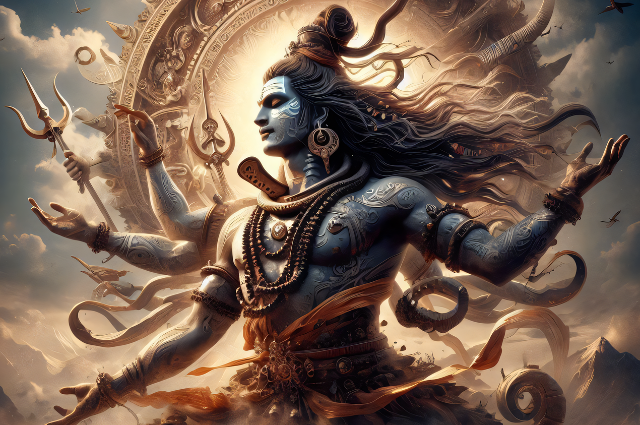
Image by Kirti Biswal from Pixabay
In Hindu mythology, Shiva is much more than just a god of destruction. His name, Shiva, translates to “auspiciousness” and “welfare,” portraying a deeper significance beyond mere destruction. Often depicted as the third god in the Hindu Triad, alongside Brahma the creator and Vishnu the preserver, Shiva embodies the cyclical nature of existence.
Contrary to popular belief, Shiva's role as the god of destruction isn't solely about wreaking havoc. Instead, it encompasses the removal of negativity, ignorance, and even death itself. It's akin to clearing the path for renewal and positive transformation. Imagine an artist melting down old metal to craft a stunning sculpture; similarly, Shiva's destruction paves the way for recreation and regeneration.
In Hindu cosmology, creation follows destruction, highlighting the symbiotic relationship between Shiva and Brahma. While Shiva dismantles the old to make way for the new, Brahma, the god of creation, shapes the universe anew. This interconnectedness underscores the balance inherent in the cosmic order.
Despite his fearsome reputation, Shiva is also revered as a protector of souls, guiding them through the cycle of life, death, and rebirth. His representation as the linga or phallus symbolizes regeneration and the eternal cycle of creation and dissolution.
Shiva embodies the duality of existence – destruction and creation, darkness and light. His complex nature reminds us that out of chaos emerges order, and from destruction springs renewal. As one of the most worshipped deities in Hinduism, Lord Shiva teaches us to embrace change, for it is through destruction that new beginnings unfold.
Unveiling the Enigma of Shiva: The Divine Balance of Destruction and Creation
Shiva, a name resonating with auspiciousness and welfare, stands as the third deity in the Hindu Triad, revered as the god of destruction. Often depicted shrouded in darkness, he is also referred to as the "angry god."
However, the term "destruction" in Shiva's cosmic realm extends beyond mere annihilation. It encompasses the eradication of negative forces like evil, ignorance, and even death itself. Much like a skilled artisan melting down old metal to craft a masterpiece, Shiva's destruction paves the path for positive recreation and transformation.
In the intricate tapestry of Hindu mythology, Shiva's role complements that of Brahma, the god of creation. While Shiva dismantles the old, Brahma shapes the new. Together, they maintain the delicate balance of the universe. Despite being feared for his association with destruction, Shiva is also one of the most revered deities in Hinduism.
In Hindu cosmology, creation emerges from destruction, highlighting Shiva's role as a reproductive force. He restores what has been dissolved, symbolized by the linga or phallus, representing regeneration and the eternal cycle of life.
In essence, Shiva embodies the profound paradox of existence – destruction and creation intertwined. His complex nature serves as a reminder that out of destruction arises renewal, and from chaos emerges order. As worshippers seek solace in his divine grace, Shiva teaches us to embrace change, for it is through destruction that new beginnings unfold.
In the beginning, nothing existed, neither the heaven nor the earth nor any space in between. So non-being, having decided to be, became spirit and said: “Let me become!”. He warmed himself, and from this was born fire. He warmed himself further still and from this was born light. He is the never-created creator of all: He knows all. He is pure consciousness, the creator of time, all-powerful, all-knowing. He is the Lord of the soul and of nature and of the three conditions of nature. From Him comes the transmigration of life and liberation, bondage in time and freedom in eternity. Some know him as Shiva the Beneficent. Others praise him as the Destroyer. For some he is Shiva the Ascetic, wandering the world. And for others still, he is the Great Lord, king of all creation. But it is as Lord of the Dance that all his aspects come together in one horrifically significant form. Nowhere else in the human world is there a clearer symbol of what a god is and does. He has 1,008 names, including Mahadeva (the great god), Mahesh, Rudra, Neelkantha (the blue-throated one), and Ishwar (the supreme god). He is also called Mahayogi, or the great ascetic, who symbolises the highest form of austere penance and abstract meditation, which results in salvation.
